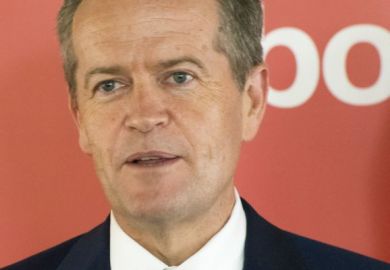Climate change events are moving fast. In the East Antarctic a few weeks ago, the collapse of a floating ice shelf the size of New York City, during an unexpected episode of unprecedented warming, has given us a glimpse of what is afoot. And last month the latest UN IPCC report, Climate Change 2022, concluded that we have just three years left to reverse the ongoing rise of greenhouse gas emissions to preserve any hope of holding the Earth’s warming to the reference level of 1.5oC above pre-industrial levels.
Many universities signed up six years ago to the UN Sustainable Development Goals 2030 and have been submitting annual progress reports on Goal 13 – Climate Action – yet carbon emissions have continued to grow unabated. Clearly, much more needs to be done, and urgently.
The university planning cycle typically generates strategic plans lasting between five and seven years. Plainly, this is wholly inadequate to crafting an effective response to this grandest of grand challenges. A meaningful time horizon for climate action planning must pivot around the key dates of 2025, 2030 and 2050, each of which represents a landmark in the necessary carbon emissions reduction timetable, from reversal of emission increases to carbon neutrality and then to carbon zero. And 2100 should also be addressed given the devastating developments scientists project for the next century should global warming of 1.5oC be significantly exceeded after 2050. That would require even more severe, carbon negative emissions targets for the second half of the century.
A long-term, whole-of-university 30-year climate action plan should be mandated by the governing council and vice-chancellor. It should include targets agreed jointly with external partners in government and business and monitored by a task force involving representatives of all levels of the university, from academic leaders to students. It should also involve interaction with the university’s international partner institutions, because a global problem demands research and teaching by a global network. It should prescribe major reviews of progress every 10 years.
Most universities already have emission reduction objectives for estate, plant and procurement arrangements. An outstanding example is the Harvard Climate Action Plan, with its aim of a “fossil fuel free future by 2050”. Some other campus emission reduction plans extend to objectives for individual actions by staff and students, too. An example is the “10 in 10” Plan at the University at Buffalo, a competition to develop climate action solutions for the campus. But even these models do not go far enough. The heart of a truly effective 30-year climate action plan would be objectives for the university’s core activities of research, teaching and external engagement. This is where universities can make the most significant contribution to ending this crisis.
In research, the action plan task force would conduct an audit of the university’s research strengths to see in what areas it has the greatest capacity to contribute. The audit would sort the research possibilities into four themes: measurement and documentation of the origin and trajectory of climate change; development of solutions for mitigation and adaptation; specific innovations in emissions reduction (such as the search for a zero-carbon aircraft fuel); and exploration of the various geoengineering possibilities. The task force would award grants to interdisciplinary teams with the capacity to contribute to one of these, especially in collaboration an external partner.
Regarding teaching, students are often well ahead of their lecturers in their passion to tackle climate change given its likely impact on their future lives and its connection with their concern about issues such as global inequality. But almost every discipline on campus can contribute to climate change teaching; the task force would have little difficulty in creating incentives for the development of appealing interdisciplinary climate change majors, or climate-related content for a wide range of subjects. And once governments accelerate the switch to fossil fuel alternatives, jobs for graduates with interdisciplinary climate change expertise will be plentiful.
In addition, there are opportunities for universities to expand public debate of climate issues on the neutral ground the campus provides, away from short-term political or economic concerns and in an environment that privileges scientific facts. PR departments could also do more to promote communication between the media, industry and governments and academics knowledgeable in climate issues.
In developed nations worldwide, the actions of our parents and grandparents, coupled with the inaction of our own generation, have added more carbon to the atmosphere in the past 100 years than was added in the previous 4,000. As a result, most countries have already sustained serious climate change damage. In Australia, the iconic koala has been declared an endangered species in several states, while the Great Barrier Reef has lost perhaps half its hard corals.
It is no longer possible to ignore all this. All levels of university leadership must become more active change agents, decisively directing their institutions’ teaching and research resources to this all-defining challenge.
Warren Bebbington is a professorial fellow at the University of Melbourne Centre for Studies in Higher Education. He was vice-chancellor of the University of Adelaide between 2012 and 2017.
Register to continue
Why register?
- Registration is free and only takes a moment
- Once registered, you can read 3 articles a month
- Sign up for our newsletter
Subscribe
Or subscribe for unlimited access to:
- Unlimited access to news, views, insights & reviews
- Digital editions
- Digital access to THE’s university and college rankings analysis
Already registered or a current subscriber? Login







